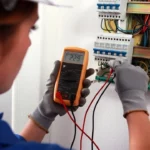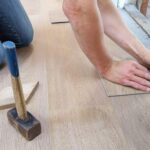Hey there! I’m Sam from Qualify Me!, Australia’s leading RPL (Recognition of Prior Learning) company. If you’ve been working in the construction industry for a while but don’t have formal qualifications, you’re probably already aware of how important a carpentry qualification can be in unlocking new opportunities.
Here at Qualify Me!, I’ve helped hundreds of people just like you turn their hard-earned skills into nationally recognised qualifications. Today, I want to talk about how getting your CPC30220 Certificate III in Carpentry can set you up for a successful career and how you can achieve this qualification quickly without going through years of training.
Why You Need a Carpentry Qualification
Let’s face it—Australia’s construction industry is booming, and qualified carpenters are in high demand. But without formal qualifications, you might be missing out on better pay, more jobs, and higher job security.
As I always say, “A formal qualification doesn’t just validate your skills—it opens doors to bigger and better projects.”
You might already have years of experience, but a nationally recognised carpentry qualification is what employers are looking for. It’s a must if you want to work on major construction sites or start your own carpentry business.
Fast-Track Your Carpentry Qualification with RPL
Here’s the good news: you don’t need to go back to TAFE or spend years in an apprenticeship to get qualified. With Recognition of Prior Learning (RPL), you can use the skills and experience you already have to fast-track your carpentry qualification.
At Qualify Me!, we’ve designed a streamlined process that’s quick and easy:
- Skills Assessment: We start with a free skills assessment to determine your eligibility.
- Portfolio of Evidence: You’ll gather proof of your experience (such as photos of your work, references, and certificates).
- Competency Check: We review your skills and ensure everything meets the standards.
- Get Qualified: Once everything’s in order, you’ll receive your nationally recognised carpentry qualification.
This process could save you years of formal training. And the best part? You’ll be ready to take on bigger roles and increase your earning potential.
"At Qualify Me!, we believe in turning your experience into qualifications fast, so you can keep moving forward in your career without slowing down."
The Skills You’ll Gain with a Carpentry Qualification
When you complete your carpentry qualification, you’ll gain a wide range of practical skills that are essential on any job site:
- Framing and formwork: You’ll learn how to construct the skeleton of buildings, which is a fundamental skill for any carpenter.
- Blueprint reading: Understanding how to read and interpret building plans is crucial for accurate construction.
- Building codes and safety regulations: You’ll be fully aware of Australia’s construction laws and ensure that every project meets safety standards.
These skills will make you stand out from the competition and give you the confidence to take on more complex projects.
Career Opportunities with a Carpentry Qualification
Once you’ve secured your CPC30220 Certificate III in Carpentry, you’ll have access to a wide range of job opportunities:
- Residential Carpenter: Work on homes, renovations, and extensions.
- Commercial Carpenter: Get involved in large-scale construction projects like office buildings, schools, or shopping centres.
- Formwork Carpenter: Specialise in creating the molds for concrete structures, an essential skill for infrastructure projects.
And if you’re thinking about starting your own carpentry business, a formal qualification is your golden ticket to get registered and insured as a contractor.
"With a carpentry qualification, you’re not just another tradie—you’re a skilled professional who’s ready to take on any job."
Frequently Asked Questions About Carpentry Qualifications
How long does it take to get a carpentry qualification through RPL?
The RPL process can be completed much faster than traditional training methods. At Qualify Me!, we typically see our clients qualify within a few months, depending on how quickly they can gather their evidence.
What is the CPC30220 Certificate III in Carpentry?
The CPC30220 Certificate III in Carpentry is the nationally recognised qualification for carpenters in Australia. It covers essential skills like framing, formwork, and blueprint reading.
Can I apply for RPL if I have informal carpentry experience?
Absolutely! Recognition of Prior Learning is designed for people who’ve gained their skills on the job, whether that’s through informal work or previous training.
Why should I get a carpentry qualification if I already have experience?
Without a formal qualification, you could be missing out on better job opportunities and higher pay. A carpentry qualification shows employers that your skills meet national standards and that you’re ready to take on more responsibility.
How does getting qualified through Qualify Me! help me locally?
As Australia’s leading RPL company, Qualify Me!, we specialise in helping local tradies fast-track their qualifications. This gives you an edge in your local job market, helping you stand out from the crowd and secure better contracts.
How to Get Started with Qualify Me!
Ready to take the next step? At Qualify Me!, we make the process as simple as possible. Whether you’ve been working as a carpenter for 2 years or 20, we can help you get your carpentry qualification fast. And if you’re looking for a local RPL company you can trust, you can always check out our Google reviews here.
"Getting your qualification shouldn’t slow you down. With Qualify Me!, it’s quick, easy, and tailored to your experience."
Conclusion
A carpentry qualification is the key to unlocking better job opportunities, higher pay, and more job security in Australia’s booming construction industry. With Qualify Me!, you can fast-track your certification and start enjoying the benefits of being a fully qualified carpenter.
RPL Recognition:
We look at a recent example where a client Adam who worked for 21 years performing high risk Palm Tree Removal Brisbane Northside. Adam got injured on the job years ago, and following a litigation lawyers successful case on his behalf, he moved on to a temporary role in a different industry. Sam wanted to get qualified using his most recent experience performing Building and Timber Pest Inspection Perth. But the prospect of going through the entire process again was daunting for Sam.
Fortunately, you don’t have to start at square one. In Australia, when you’re looking at going back to university or starting a new trade, educational institutions and workplaces allow for Recognition of Prior Learning short for RPL. Not only is it great for speeding up new courses but it also gives you credit for what you’ve previously learned and achieved.
Whether you’ve undertaken a four-year degree or learned from the best in the business, no doubt you’ve picked up transferable skills that are relevant to different trades and professions. This is where a registered training organisation (RTO) comes in. An RTO in Australia can evaluate all of the knowledge and experience that you’ve accumulated in your career to decide whether you’ve picked up relevant skills for another vocation.
After they assess your previous work, they’ll determine if your skillset is up to Australian standards and if it should be formally recognised – this process is called the Recognition of Prior Learning. For example, if you’ve worked as an Executive Assistant (EA), you may have picked up skills that are relevant to a business administration qualification.
In order to gain an RPL certificate, sign up for a registered training organisation like Qualify Me. They’ll give you a free skills assessment that will give you an indication of whether your previous experience and learnings should be formally recognised. The assessment will also help identify what you need to do to reach your career goals.
Next, you’ll need to gather all the evidence that prove you have gained knowledge and understanding that should be accredited. This includes:
- Current resume
- Reference letters
- Work samples, photos or videos
- Certificates and transcripts,
- Overseas qualifications.
A qualified assessor will then go through your portfolio before calling you in for quick chat, or if necessary, observe you in a practical setting and check that you have the essential capabilities. They will also ensure you meet Australian industry standards.
Once the assessor is happy that you contain the necessary knowledge and proficiency to be recognised with a different expertise, they will issue you with a nationally accepted RPL certificate.
Why is Recognition of Prior Learning important?
Not only does RPL recognise the prior learning you’ve undertaken and the experience you’ve acquired in your career so far, it also reduces the time it would take if you signed up for further tertiary education. Plus, if you’re looking for that promotion or to move within your company, an RPL will help convince your supervisors you’re fit for the job.
Regardless of whether your experience was gained in Australia or abroad, as long as you have evidence of your knowledge and skills, you’re able to apply for an RPL. Once you’re confident you’ve got the supporting documents and you’re ready to get the ball rolling, sign up to an RTO to begin your skills assessment. Once the boxes have been ticked and the assessor is happy that you meet Australian standards, you’ll be issued an RPL certificate.
What documents or evidence requirements are needed to qualify for an RPL?
Before you consider applying for an RPL, it’s important to think about what documents you have on hand that proves you’re a capable candidate. Fortunately, there are plenty of ways to show evidence of your prior work, experience, and knowledge. The standard papers include records of completed training assessments, declarations from your employer that show proficiency and competence, and of course, any student records provided by ASQA (Australian Skills Quality Authority). Proof should also be fairly recent – within the last two to three years.
If you’re looking to bolster your portfolio with further documents, you can also include a report detailing your relevant experience. Try to add references from people you have professional relationships with – this will add reputability to your claims.
So what are you waiting for? Whether you want to add to your resume or you’re eying up a different vocation, get started with Qualify Me now.













